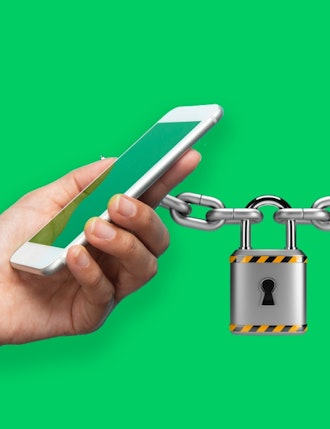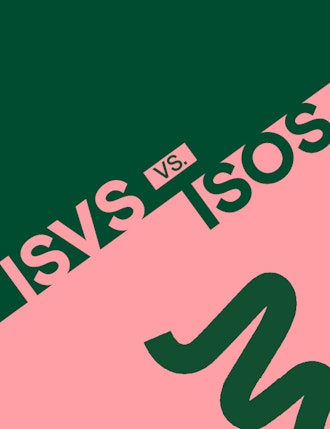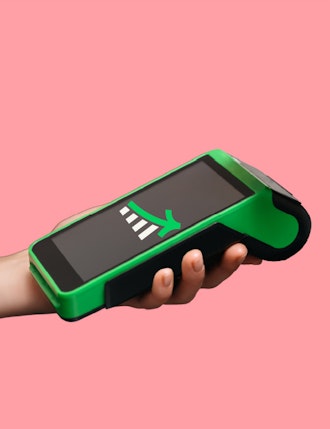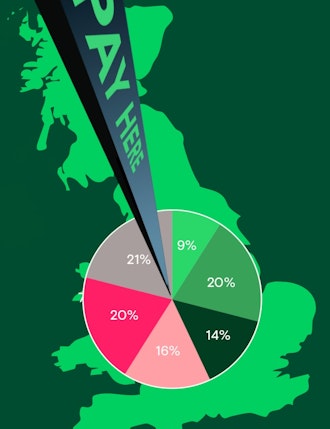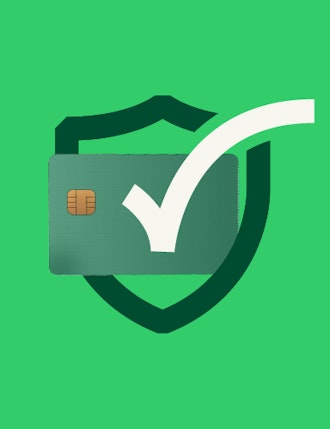Key Insights
-
SoftPOS transforms any NFC-enabled smartphone into a payment terminal - no specific payment hardware required.
-
mPOS combines a mobile device with a physical card reader to accept chip, contactless, and magstripe payments.
-
The biggest difference between SoftPOS and mPOS is payment hardware: SoftPOS eliminates the need for a separate card reader.
-
SoftPOS is ideal for scalable, flexible setups like pop-ups, queue-busting, and low-infrastructure deployments.
-
ISVs and PSPs must weigh factors beyond hardware, like compliance, integrations, and offline capabilities, when choosing the best in-person payment solution.
Don't have time to read more now? Sign up to our newsletter to get the latest insights directly in your inbox.
Tap, pay, done. That’s what most customers (and of course, merchants) expect from in-person payments today - speed, simplicity, and no surprises. But for the ISVs and PSPs powering these transactions behind the scenes, the decisions are anything but simple.
With new merchant demands, tighter margins, and rising expectations for flexibility, choosing the right in-person payment solution is about features and fit. Two leading contenders are SoftPOS and mPOS. But what’s the difference, and which one is right for you and your merchants?
Let’s break it down.
What is mPOS and SoftPOS?
mPOS (mobile point-of-sale) is a portable payment setup using a mobile device (like a smartphone or tablet) connected to a physical card reader. It supports chip-and-PIN, contactless, and magstripe payments, making it widely versatile across sectors.
SoftPOS (software point-of-sale) goes a step further. It turns any NFC-enabled smartphone or tablet into a contactless payment terminal, using only a software app - no dedicated payment hardware required. That means fewer moving parts, lower upfront costs, and quicker deployment.
For more on the rise of SoftPOS, check out our article on SoftPOS Market Potential.
SoftPOS vs. mPOS feature comparison
SoftPOS and mPOS both enable businesses to accept in-person payments, but the way they do it, and what they require to work, can look very different. Whether you're supporting merchants in retail or hospitality, understanding these distinctions is key to delivering the right solution for the right use case…
No single option is universally better, it all depends on the merchant's operating environment, customer expectations, and growth plans. With the differences now clear, the next question is: which solution best fits your merchants’ needs?
Which one fits your merchants' needs?
Your merchants aren’t all the same, and neither are their payment environments.
SoftPOS is ideal for:
- Pop-up retailers and seasonal vendors
- Freelancers and field-based services
- Larger enterprises adding mobile options (e.g. queue-busting in retail)
- Regions where NFC and contactless adoption is high
mPOS is better suited for:
- Merchants serving customers who prefer chip-and-PIN or magstripe due to age, region (e.g. U.S.), or distrust of mobile/contactless payments.
- Areas with lower contactless adoption
- Situations where offline payments are required
- Businesses with more complex reporting, payment hardware, or integration needs
Some providers now offer hybrid solutions, allowing merchants to switch between SoftPOS and mPOS modes as needed. Aevi’s POS systems are designed with this kind of flexibility in mind.
Where the market isn’t looking hard enough…
A lot of comparisons between SoftPOS and mPOS stop at payment hardware and types. But for ISVs and PSPs building real-world solutions, that’s just the surface. To roll out at scale and deliver real value to merchants, you need to think about what happens behind the scenes. Here are some of the areas that often get missed:
- Compliance and certification
SoftPOS needs to meet PCI CPoC standards, but what about EMVCo, regional requirements, or changing local security rules? These can catch teams off guard if not factored in early. We break down these certification and security standards in this detailed overview of SoftPOS compliance.
- Backend integration
A payment solution doesn’t stand alone. It has to plug into other tools - inventory, CRM, accounting, loyalty. Some mPOS setups still need workarounds to do this, while newer SoftPOS platforms are more API-ready by design. For a more detailed explanation of APIs and why they should be integrated into your platform, read our API article, here.
- Offline resilience
mPOS can usually handle offline transactions and sync later. Most SoftPOS solutions still rely on a live connection, though some are starting to introduce delayed processing. The question is: is it good enough in busy or low-connectivity settings?
- Device performance and variability
Not every NFC phone performs the same. Factors like battery life, NFC reliability, or OS version can impact how well a SoftPOS solution works, especially in high-traffic environments or with lower-end devices.
These are the kinds of details that determine whether a solution works in the real world. That’s why Aevi’s platform is built to simplify complexity - combining flexible, hardware-agnostic tools with built-in compliance and seamless integration.
"For us at Aevi, innovation means keeping the payment industry in sync with ever-changing consumer demands. That also means not locking merchants into rigid tools. Needs shift. Merchants grow. We believe true scalability comes from flexible technology and real choice, solutions that adapt to each market, not a one-size-fits-all approach."
Sarah Koch, Director of Marketing and Communications, Aevi
Why choosing between SoftPOS and mPOS isn’t the whole story…
SoftPOS is often described as the natural evolution of mPOS, and for good reason. It’s simpler to deploy, easier to scale, and more in tune with the mobile-first world many merchants operate in. But that doesn’t mean mPOS is obsolete, especially in offline scenarios or where chip-and-PIN remains critical.
The real value lies in offering choice. Merchants don’t want rigid systems, they need tools that can flex around customer preferences, and business growth. ISVs and PSPs are uniquely positioned to deliver that flexibility, helping their merchants stay ahead without overcommitting to a single path.
That’s exactly where Aevi comes in. Our in-person payment orchestration platform is built to support both SoftPOS and mPOS in a way that’s hardware-agnostic, integration-ready, and future-focused, so ISVs and PSPs can give merchants the flexibility to adapt, scale, and stay competitive across any in-person payment scenario.
Ready? Let’s talk.
Interested in reading more around this subject? Here are some useful articles…


